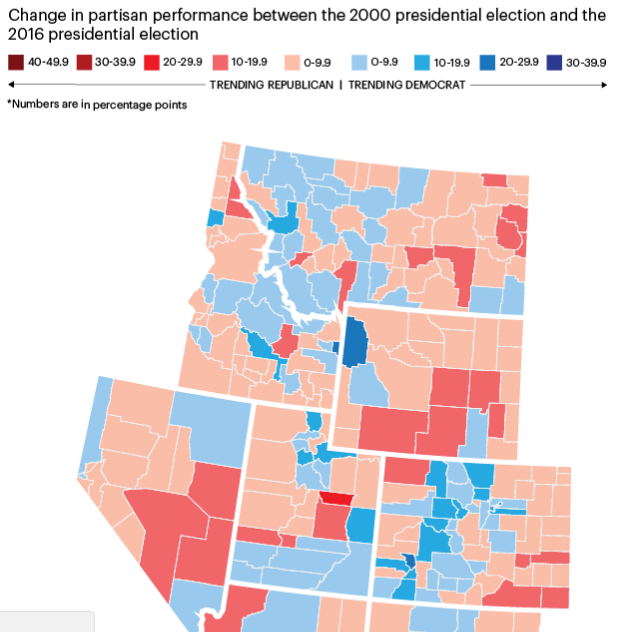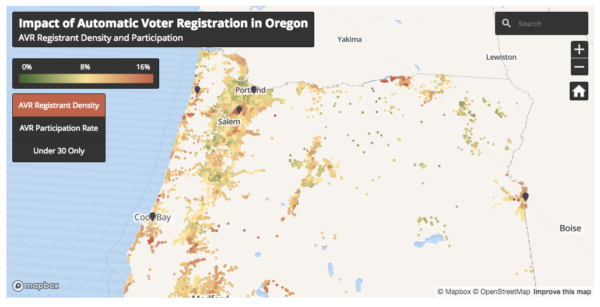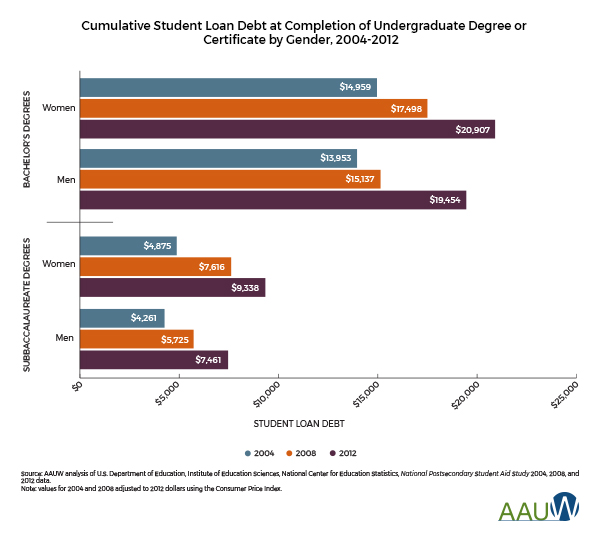If nothing else, 2017’s legislative elections so far put Democrats on track to make big gains in statehouses across the country in 2018 — the sector of government where the party suffered the most during the Obama years. That’s important because the next round of redistricting is less than four years away, meaning 2018 will decide many of the governors and legislators who will draw the congressional districts of the 2020s. From the smallest of small elections on a random Tuesday in this odd year, clues are being dropped about who might hold the balance of power in Washington for the next decade or more.
U.S. Census: Unmarried and Single Americans Week
To commemorate Unmarried and Single Americans Week (September 17-23), the U.S. Census has produced a “Facts for Features” profile (PDF) of 2016 census data about unmarried Americans. Here are some of the highlights:
- There are 110.6 unmarried people 18 or older in America, making up 45.2% of the U.S. adult population.
Read the rest of the U.S. Census Bureau’s “Facts for Features” profile (PDF) on unmarried Americans.
Millennials to pass baby boomers as largest voter-eligible age group, and what it means
For the first time, millennials next year will pass baby boomers as the largest generation of Americans eligible to vote.
By Ronald Brownstein, CNN Senior Political Analyst
July 25, 2017
(CNN)In 2018, the American electorate will cross a historic threshold that could reshape the political balance of power-or leave Democrats fuming in frustration at continued Republican dominance of Washington.
How Votes Have Shifted: Changes in Partisan Performance 2000-2016
Demographic change is slowly, but inevitably, moving Western states to the left.
Since Trump’s Election, Increased Attention to Politics – Especially Among Women
Pew Research: “Nearly six-in-ten women (58%) say they are paying increased attention to politics since Trump’s election, compared with 46% of men. Overall, more Democrats and Democratic-leaning independents than Republicans and Republican leaners say they have become more attentive to politics. But there are similarly wide gender gaps in heightened interest to politics among members of both parties.”
Also interesting: “Most people (59%) say it is ‘stressful and frustrating’ to talk about politics with people who have a different opinion of Trump than they do; just 35% find such conversations ‘interesting and informative.’ Read more at Pew Research
Census shows nonmetropolitan America is whiter, getting older, and losing population
Will nonmetropolitan America hold on to its outsize political clout? Perhaps not, according to some incisive analysis from William H. Frey at Brookings:
“Newly released census statistics for 2016 confirm that diversity in the United States continues to rise. For the first time, the population under age 10 has become minority white (white non-Hispanic) as the Hispanic, Asian, black, and other racial minority populations continue to rise up the age structure (download Table 1). The new numbers also show that Nevada has joined the ranks of states with minority white populations, along with Hawaii, California, New Mexico, and Texas, as non-white racial groups continue to disperse (download Table 2). Yet one part of the nation continues to stand out for its slow embrace of the diversity surge: the 14 percent of the population that lies outside the nation’s metropolitan areas.
This is noteworthy in light of the huge attention given to nonmetropolitan America in the aftermath of the 2016 election because of its strong support of President Trump. Not only has the nonmetropolitan population remained much whiter than the rest of the nation, it is also getting older faster and shrinking in size. Despite its unmistakable impact on last year’s election, the demography of nonmetropolitan America—distinct from the rest of the country—may limit its long-term political clout.”


The Brookings report examines trends in race, age, and population growth – each of which indicate a retraction in nonmetropolitan America’s sway.
“Despite constituting a small and declining portion of the population both nationally and in most states, nonmetropolitan voters demonstrated substantial political influence during the latest election cycle. Can this sliver of the population continue to exert such clout?
It will certainly be more difficult. To be sure, there is wide variation among small nonmetropolitan areas—ranging from those with once-thriving farming and manufacturing sectors to those that are investing in newer industries. It is also possible that the population losses seen in many rural areas and small towns in the post-recession period may be less severe as the economy improves. But the new census statistics make plain that this segment of the nation’s population remains distinct on key demographic dimensions in sharp contrast to a much larger, growing and more diverse urban America.”
Does Hard Work Pay Off For Black Women?
“Despite increasing college attendance and labor-force participation, African American women still aren’t getting the economic security of their white peers.”
The Atlantic examines a new report from the Institute for Women’s Policy Research and the National Domestic Workers Alliance explores why “the importance of women’s economic health in the black community is hard to overstate.
“That’s in part because black women tend to shoulder a lot of their households’ financial burden. More than 80 percent of black mothers are the breadwinners (defined as sole earner or bringing in at least 40 percent of total earnings) in their household. That’s compared with 50 percent of white mothers. And three-quarters of the black women who hold breadwinner status are doing so alone.”
In addition to analyzing the economic challenges and social inequities that black women face, the IWPR/NDWA report offers critical suggestions for how to improve the economic position of black women.
“The authors note, for instance, that union membership could increase black women’s earnings by more than 30 percent a week. They also suggest that policy changes that would generally improve wages, health coverage, and paid leave could particularly help black women. And increasing the representation of black women in politics and policy could help create a political system that actually addresses the problems that black women face.”
CAP: Who Votes with Automatic Voter Registration?
A new report from the Center for American Progress analyzes the impact of Automatic Voter Registration in Oregon, and finds significant differences between AVR registrants and voters who registered using traditional means.
“Compared with traditional registrants and voters, AVR registrants and voters were:
Noticeably younger—about 40 percent of AVR registrants and 37 percent of AVR voters were age 30 or younger. In comparison, 20 percent of eligible Oregon citizens are age 18 to 29
More likely to live in suburban areas and less likely to live in urban areas
More likely to live in low- and middle-income areas
More likely to live in lower-education areas
More likely to live in racially diverse areas—the average AVR registrant’s community was more Hispanic and less white than that of traditional registrants
While every state may have different attributes, Oregon provides strong evidence in favor of automatic voter registration. AVR strengthens democracy by expanding and broadening the electorate. AVR’s streamlined systems can save states and localities significant costs, make the voter registration lists more accurate and up to date, and increase the security of the voting system. AVR is the next logical step in creating an efficient, secure, and modern voter registration system for the 21st century.”
538: Democrats Are Overperforming In Special Elections Almost Everywhere
Electoral trends since the November election have been so clear, “as Trump himself might say, “There’s something going on.”
“Since Trump took office, voters have gone to the polls 24 times1 in 13 states to fill vacancies in their state legislatures — giving us a data set that is robust enough for us to start identifying patterns. And the results in these races echo the returns from Kansas and Montana: Democrats have overperformed almost everywhere.2
Since Jan. 20, Democrats have won 12 special legislative elections, and Republicans have won 11.3 But because so many special elections take place in safe districts, win-loss records can only tell you so much. Instead, you’re better off comparing their final results to the district’s baseline partisanship, which FiveThirtyEight measures using a weighted average of the last two presidential election results4 as calculated by Daily Kos.5 And in the 15 special legislative elections to pit at least one Democrat against at least one Republican,6 12 have seen a net swing toward the Democrats.”
Voting rights advocates are watching closely, and for good reason: the 2018 midterms could have a substantial long-term impact.
Women’s Student Debt Crisis in the United States
A new study from AAUW explores the financial reality of being a woman in America, in which increased student borrowing compounds (and is compounded by) the fact that women earn less than men for equal work.
“Right now about 44 million borrowers in the United States hold about $1.3 trillion in outstanding student loans. The scale of outstanding student loans and an increasing share of borrowers who fail to repay have made many Americans aware that student debt is a challenge for society and for individual borrowers. Yet despite the fact that women represented 56 percent of those enrolled in American colleges and universities in fall 2016, many people do not think of student debt as a women’s issue. This report reveals that women also take on larger student loans than do men. And because of the gender pay gap, they have less disposable income with which to repay their loans after graduation, requiring more time to pay back their student debt than do men. As a result, women hold nearly two-thirds of the outstanding student debt in the United States — more than $800 billion.
AAUW’s report “offers a broad overview of how student debt became a women’s issue. It aims to change the conversation around student debt so that it includes gender-based analysis and solutions. The analysis examines the experiences of women as a diverse population and presents statistics by race and ethnicity as well as other demographics. The report relies heavily on publicly available federal government survey data as well as published studies undertaken by academics and organizations researching the issue of student debt.”
Heather Booth: She’s The Best Answer To Donald Trump You Never Heard Of
The Voter Participation Center is looking forward to the release of Heather Booth: Changing The World, a documentary film exploring our longtime friend and former board member’s history in organizing and progressive politics. But don’t wait for the movie – Huffington Post’s new profile of Heather is a must-read!
“Booth, 71, is one of the nation’s most influential organizers for progressive causes. Inside almost every liberal drive over the past five decades ― for fair pay, equal justice, abortion rights, workers’ rights, voter rights, civil rights, immigration rights, child care ― you will find Booth. But you may have to look hard.”
“Because she’s not always at the head of the protest march. More often, she’s at a let’s-get-organized meeting in a suburban church basement or a late-night strategy session in a crumbling neighborhood’s community center. She’s helping people already roused to action figure out practical ways to move their cause forward. And always she’s advancing the credo she learned as a child: that you must not only treat people with dignity and respect, but you must shoulder your own responsibility to help build a society that reflects those values.”
…The Trump era “is a perilous and inspiring time ― both are true,” she told HuffPost. “The peril can’t be overstated. I do think families will be ripped apart, people will unjustly be imprisoned, jobs will be destroyed. I think lives may be destroyed,” she said. “I fear for unjustified wars. I think the structure of democracy itself will be threatened, from simple protections of people’s health and safety to the ability to live a decent life. So … a time of great peril.”
“But …” She allowed herself a broad smile, offering a glimpse of the spirit that has powered uphill battles all these years. “I am incredibly heartened by the outpouring of people standing up to say, ‘You’re not going to do this. We are going to defend our lives, our families. Our democracy! And we are going to defend each other.’”
“If you stand together and organize,” Booth said, “you can change the world.”
Read the whole profile at HuffingtonPost.com.





